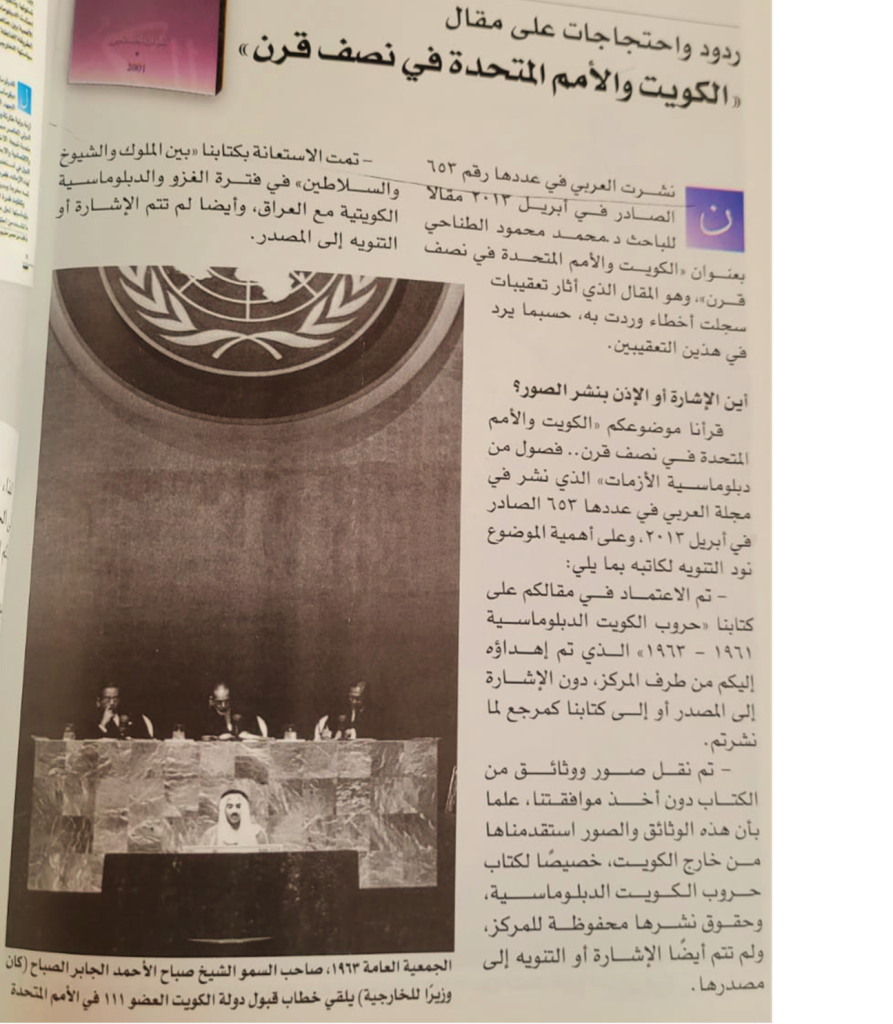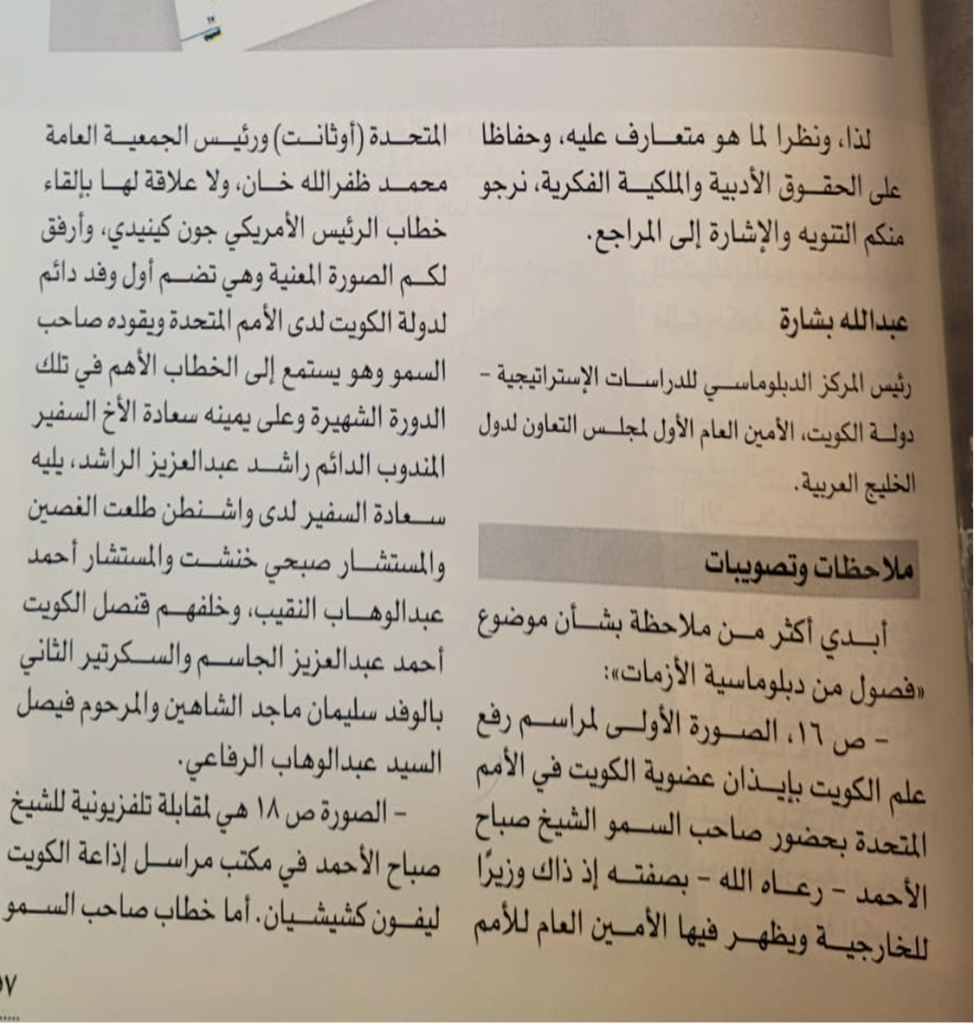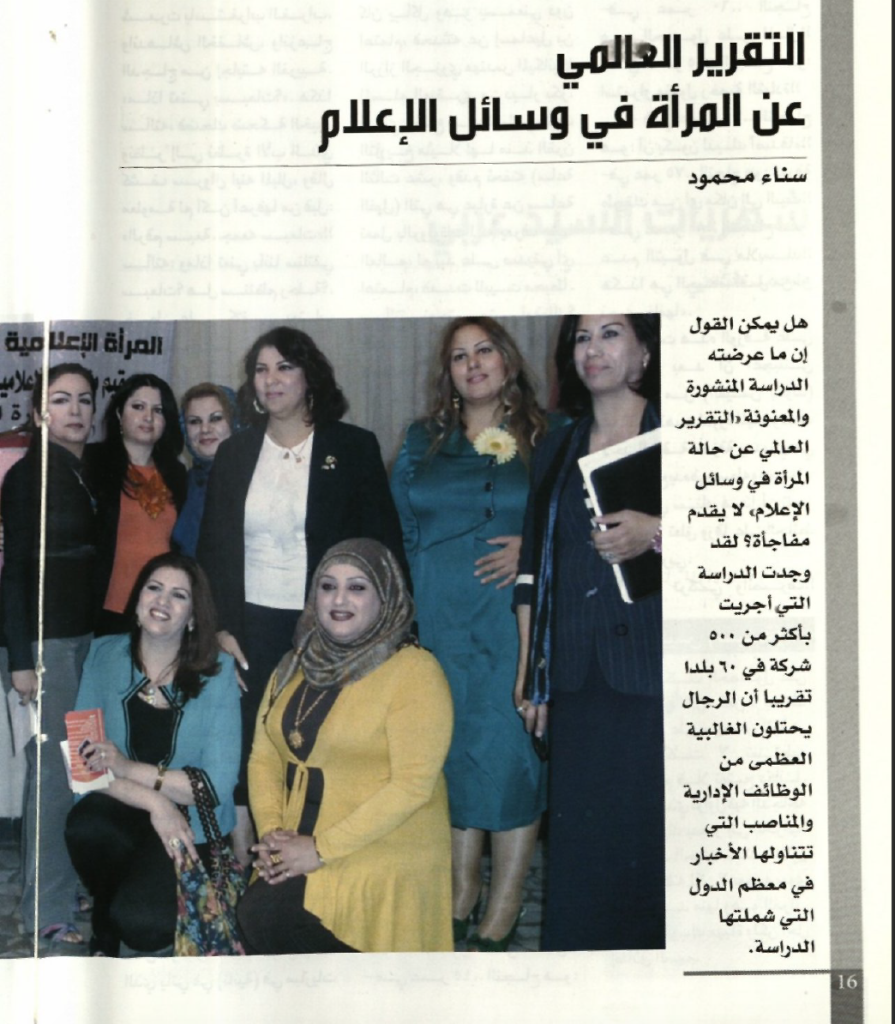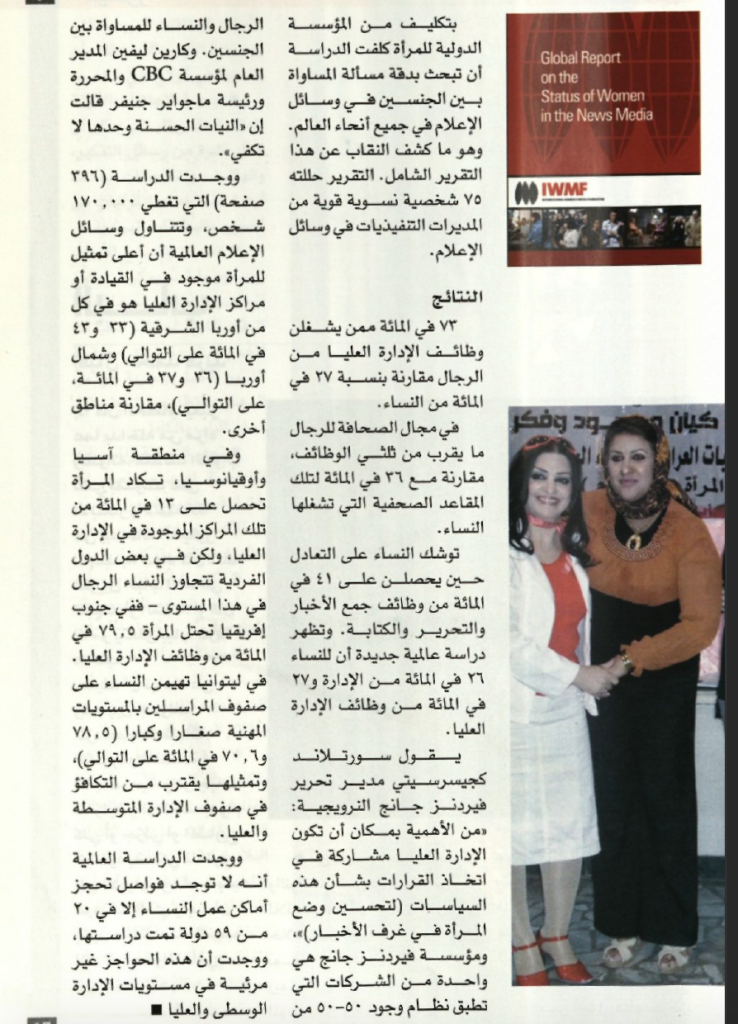




GRAMMAR NOTE 1 الاضافة غير الحقيقيةوالنعت السببي
1. الاضافة غير الحقيقية False Idaafa. / The adjectival/participial construct
We have encountered so far in this book two types of اضافة constructions: one whose first term, المضاف , is a noun and whose second term, المضاف اليه , is also a noun that shows relationships of possession, origin, container, naming, etc., and one whose first term, المضاف , is a (verbal noun) مصدر (verbal noun) , and whose second term, المضاف اليه , is either a subject and/or predicate (with intransitive مصدر. v.n.), or agent and/or object (with trans. v.n.) of the first. These are called إضافة حقيقية ‘ “real” اضافة ’.
Let us now examine the following underscored constructions the first three of which which occur in this lesson:
كانت (الصحيفة) بعيدةَ الأثر It had a far reaching effect (“it was far in effect”).
مِن الصحفِ ا لعربيةِ الواسعةِ الانتشارِ one of the widely distributed Arabic newspapers (“ wide of distribution”)
ان بعضَ الجرائدِ … رسميةُ الطابعِ Some newspapers are official in character (“official of character”)
هذه الفتاة معقودة اللسان This girl is tongue tied (“ tied of tongue”)
Like the other اضافة constructions, they consist of two terms the second of which is in the genitive, but they differ from حقيقية اضافة, in many important ways to be specified below, and hence, in contradistinction to them, are called إضافة عير حقيقية ‘false or “unreal”اضافة’.
They correspond to a few English expressions such as ‘hard of hearing’, ‘quick of temper’.
The properties of إضافة غير حقيقية are as follows:
a. The first element (المضاف) is mostly adjectival (which in its form can be a qualitative adjective صفة مُشَبَّهة, like بعيد , an active or passive participle, like واسع ‘wide’ or مفتوح ‘open’, a نسبة adjective, like رسميّ ‘official’, a color adjective, like أبيض ‘white’, etc. ), but can be a participle with verbal force, especially a passive participle.
b. It differs from حقيقية اضافة in two main respects: (i) it does not express possession or some such relationship, and (ii) itsمضاف can take the definite article, even when مضاف اليه has one.
c. Like other adjectives, this اضافة can serve as predicative (in the first, third, and fourth examples above), as attributive (in the second example above where it modifies الصحفِ ), or as حال , as in:
جاء الى امريكا حديثَ السن He came to America young “ young of age”.
ترى الرجال دائماً مرفوعي الرأس You always see the men with heads held high “high of head”.
ِمن الصحفِ ا لعربيةِ الواسعةِ الانتشارِ one of the widely distributed Arabic newspaper
.. رسميةُ الطابعِ إنّ بعض هذه الجرائدَ .. Some newspapers are official in character.
d. In terms of concord or agreement, the adjectival مضاف , agrees with its referent in gender, number, case, and definiteness, exactly as an adjective would, except that being an اضافة it does not take تنوين and drops the نون of the مُثَنّى (dual) and جمع مذكّر سالم (sound masculine plural) . Thus,
الَولدُ/َ/ ِ الحديثُ/َ / ِ السنّ the young (“young of age”) boy
البنتُ/ َ / ِ الحديثتةُ /َ / ِ السنّ the young (“young of age”) girl
رجالا حديثي السنّ young (“young of age”)men
الرجلان القبيحا الوجه the two (“ugly of face”) men
However, even when used attributively, the definite article on the adjectival مضاف is often dropped in Modern Standard Arabic.
e. The construction as a whole qualifies a preceding noun, but the adjective itself qualifies the following noun. Thus, in the first example in c. above, it is the age that is ‘recent, young’ but it is ‘he’ who is young of age, and in the second example, it is the head which is raised, but it is the men whose heads are raised high.
f. For the حقيقية اضافة غير to be well-formed, the second term اليه المضاف must be something that reflects the nature, character, or identity of the مضاف . Thus,
رجل مكسور الشبّاك* a broken windowed man
would not be acceptable, but
رجل مكسور القلب a broken hearted man would.
Similarly,
طالب قليل الأدب/الحظّ a discourteous / unlucky (“of little courtesy/luck”) student is OK, but طالب قليل الكتب is not.
g. in coordinated حقيقية اضافة غير a pronoun may replace the repeated اليه مضاف:
صغير السن او كبيره young in age or old
h. finally, There are a few expressions in MSA with adjectives having nouns annexed to them which are not حقيقية اضافة غير but are used as nouns: Here are some of them:
جزيل الشكر abundant thanks
كامل الحريّةّ full freedom
في مختلف المناطق والعصور in various regions and times
2. النعت السببي
A construction with meaning similar to حقيقية اضافة غير is one where a clause is used instead of a phrase. So, instead of صحيفة واسعة الانتشار we can have the following with no change in meaning:
صحيفةٌ انتشارُها واسعٌ (“a newspaper whose circulation is wide”)
صحيفةٌ واسع ٌ انتشارُها (“a newspaper wide is its circulation”)
This latter construction is called النعت السببي . In it, the adjective or participle which is in first position syntactically modifies the antecedent or preceding noun, but logically modifies the following noun.
Properties of النعت السببي
1. Agreement
a.. In both of these examples, we have an indefinite relative clause modifying the indefinite noun صحيفة . With a definite antecedent, we will need to have a definite relative clause with a relative pronoun; that pronoun called الاسم الموصول ‘relative pronoun’ is ال with an adjective (or participle) in first position in the clause (See note 3 in this lesson). Thus, we have,
الصحيفة التي انتشارُها واسعٌ
في الصحيفةِ التي انتشارُها واسعٌ
الصحيفة ُ الواسعُ انتشارُها
في الصحيفةِ الواسع ِ انتشارُها
b.. You will notice in these examples that with النعت السببي we have agreement (of the adjective or participle) with the antecedent, that is the head noun, not only in definiteness, but also in case.
c.. However, agreement is with the following noun, always its subject, in gender and number.
في الكتابِ الواسعة ِ شهرتـُُه in the newspaper whose reputation is wide spread
قابلنا الطلابَ/الطالبات الأغنياءَ آباؤهم/هنّ We met the students whose parents are rich.
You will have observed no doubt that the noun that follows the adjective or participle is always in the nominative. Also, it contains a pronoun that agrees with the antecedent.
To summarize: The adjective or participle at the head of النعت السببي agrees in case and in definiteness with the referent, but in gender and number with the following noun.
2. Structure
a. النعت السببي in the examples above has adjectives in the first position. In addition we may have participles, both active and passive:
من الامور السابق ذكرها وتنفيذها of the aforementioned and formerly executed matters
الرجال المحظورة تسميتـُهم كثيرون The men whose naming is forbidden (“who it is forbidden to identify”) are many.
It should be remembered that اسم المفعول of a verb that governs an object by means of a preposition is always masculine singular.
مع النساء المحكوم على ابنائهنّ بالموت with the women whose children are sentenced to die.
3. Function
Finally, in all the examples above, النعت السببي is used attributively, as a noun modifier. But like all adjectival constructions, it can also serve as predicate and as حال .
هؤلاء الطلاب أغنياءُ آباؤهم These students have rich parents (“are parent-rich).
وجدت طلاّب هذه الجامعة قويّة ً عزائمُهم I found the students at this university resolute (“having firm intentions”).
And, again like other adjectival constructions, it can also be used as a nominal, without a referent or antecedent, with all the functions thereof.
ويل للقساةِ قلوبُهم Woe to the hard hearted!
GRAMMAR NOTE 2
المفعول المطلق ‘Cognate Accusative’
As you will remember, the verb in Arabic (or one of its derivations, i.e. verbal noun, active participle, passive participle, or adjective) may be followed by its own verbal noun مصدر , mostly indefinite, and in the accusative case منصوب or في حالة النصب , which serves as adverbial complement to the verb or its derivatives typically to indicate the manner in which the action is performed . It is called المفعول المطلق ‘the absolute object’, better known in English as ‘cognate accusative’, examples of which you have run into many times in this and other books. In this lesson we run into a construction with the verbal noun that has not occurred before:
جمهور الطلاب لا يقبلون على التعليم المهني اقبالَهم على التعليم النظري
Before we proceed to discuss this construction, which we present in the third point below, let us briefly review what we know about المفعول المطلق:
1. a. The most frequent occurrence of المفعول المطلق we encountered was as المصدر with modifiers, such as an adjective or جملة وصفية :
تساعد على فهم المعنى وعلى قراءة الكلمة قراءة صحيحة
It helped to understand the meaning and to read the word correctly (“with correct reading”)
وتغيّرت اوضاعهم تغيّراً شاملاً Their conditions change completely.
وتحاول معظمُ هذه الحكومات … توجيه الطلبة توجيها يرفع من اهمية التعليم المهني.
حبّه لها عميق عُمقاً لا يقدّ َر His love for her is immeasurably deep (lit. is a love of immeasurable depth)
وان الحكومات العربية مهتمّة بهذا النوع من التعليم اهتماما كبيرا.
The Arab governments have deep concern for education.
b. المفعول المطلق may appear in an إضافة as مضاف اليه , in the genitive, modified by the مضاف , which could be:
(i) the word كلّ
كان حريصاً كلَّ الحـِرص على إتمام واجباته. He is resolutely intent on completing his duties.
(ii) مصدر
اعرفه تمَام المعرفة. I know him perfectly well (“with completeness of knowledge”).
(iii) an elative:
استقبلوه أروعَ استقبالٍ. They received him in splendid fashion.
عوقب شرَّ عقابٍ. He was given the worst kind of punishment.
(iv) the word أيَّ or أيَّما
عانقها ايَّ عناق He embraced her passionately (lit. with what an embrace!)
اورقت أيّما ايراقٍ It leafed and what leafing!
c. المفعول المطلق may sometimes have the definite article, in which case it may modified by a preceding demonstrative:
لم تهتمَّ بالموضوع الاهتمامَ الكامل الذي كنت أتوقـّعه.
He did not take as much interest (“the total interest”) in the matter as I expected him to.
ضحكت تلك الضحكة البريئة التي عهدتـُها فيها She laughed that innocent laughter that I had come to expect.
d. المفعول المطلق , in addition to being a verbal noun, can be , اسم مرّة ‘a noun of single occurrence’, in the s., dual, or p., or اسم نوع ‘a noun of a kind’, as in :
وابتسموا لها ابتسامة حلوة… They smiled at her sweetly (“they smiled at her a sweet smile”)
جرع جرعتين من يدها He gulped two mouthfuls from her hands.
نظرت اليه نظرات مُحـْدِقة She fixed her glance on him.
كان يهُزّه هزّاتٍ عنيفة. He was severely shaken (“severe shakes shook him”
2. The verbal noun may occur alone, without modifiers, to express intensity, emphasis of the core meaning of the verb or verbal element it modifies; a literal translation is of little help, so you can get the meaning of the following from an idiomatic rendering of the context:
حفظ القرآن وأتقنه إتقاناً He learned the Qur’an and mastered it perfectly
غبّ الشراب غبّاً He gulped the drink avidly.
مزّق الأوراق تمزيقاً He ripped the papers up.
3. As seen in this lesson, the verbal noun may appear in an إضافة as مضاف الى فاعله او مفعوله (i.e. followed by its subject or object) . The meaning conveyed here is one of comparison, similitude, the idea being ‘in like manner to’:
ان جمهور الطلاب لا يقبلون على التعليم المهني اقبالَهم على التعليم النظري
‘They do not commit to technical education the way they do to theoretical education (lit. in a manner similar to their commitment to …’
مرّ مرَّ البرق He flashed by (lit. like lightning).
مرّ مرَ الكرام He brushed by, passed as if nothing happened (harmlessly as noble people do).
هبط عليه الحادث هبوط الصاعقة The event hit him like a thunderbolt.
In a real sense, then, اقبالَـَهم is equivalent to كاقبالِهم or كما يقبلون, مرَّ
كما يَمُرّ البرق , and كما يمرّ الكرام .
Grammar Note 3
التَمْييز (also التَبْيين and التَفْسير) ‘Accusative of Specification’
التمييز consists of a noun, generally a مصدر , or a nisba adjective (one ending in (-يٌّ, always indefinite and in the accusative case; it follows the modified word and elaborates on and delimits its features and characteristics. The construction means “with respect to, in regards to, as regards” and may qualify verbs, adjectives, and nouns.
1.كمصدر التمييز
1.1 As verb modifier:
لم أرَ مثلها حسناً وجمالاً I never saw the likes of her in grace and beauty.
لا يختلف لباسهم شكلاً ولا لوناً What they wear does not differ in shape or color.
امتلأ قلبه خشوعاً وخضوعاً واجلالاً Their hearts were filled with beauty, submission and respect.
يشرحون النص اسلوباً ومعنىً They explained the texts with respect to its style and meaning.
Widely used with تمييز are verbs that denote a change in size or number, like زاد and ازداد ‘to increase, grow in size’ and قلّ ‘to become few’.
مما زاد بغداد جمالاّ … Of the things that increased Baghdad in beauty …
أخذوا يزدادون عدداً ونشاطاً They increased in number and energy.
Compare the sentences below on the left with those to the right. How do they differ in construction and in meaning?
لم أرَ مثلها حسناً وجمالاً لم أرَ مثلَ حسنِها وجمالِها
لا يختلف لباسُهم شكلاً ولا لوناً لا يختلف شكلُ ولونُ لباسهم
يشرحون النصَّ اسلوباً ومعنىً يشرحون اسلوبَ ومعنى النص
مما زاد بغداد جمالاّ مما زاد جمالَ بغداد
أخذوا يزدادون عدداً ونشاطاً أخذ عددهم ونشاطهم يزدادان
Now, how would you insert استخدام اللغة الانجليزية ‘the use of the English language’ after ازداد العالم … as a تمييز construction, taking into consideration the statement above that a تمييز word is always indefinite and in the accusative?
Well, the تمييز verbal noun in this case cannot be followed directly by its object–in other words it cannot be a مضاف الى مفعوله مصدر ‘a verbal noun as the first term of an idafa’: the object of the مصدر will have to be introduced by the preposition لِ , called اللام لتقوية العامل (لِ for the reinforcement of the agent) thus:
ازداد العالم استخداماً للغة الانجليزية The world has increased its use (in the use) of the English language.
1.2 As an adjective modifier:
a. with regular adjectives
عظيمٌ شأناً هذا المعهد This institution is great in importance.
طويلٌ قامة ً هذا اللاعب This player is tall in stature.
This construction with adjectives is rare in modern فُصْحى , however. Much more common in this case is the forming of اضافة غير حقيقية ‘an adjectival idafa’ with the adjective as its first term.
هذا المعهد عظيم الشأن This institute is great in status.
عرفت اللاعب طويل القامة I got to know the player who is tall in stature.
again with the appropriate endings on the adjective.
b. with elative adjectives. You will remember that in Arabic we express the comparative degree by using the masculine singular form of the elative, alone or followed by the prepositional phrase with مِن ‘than’ اكبر (من). For the superlative we use a definite elative, i.e. one that has the definite article (الكُبرى /الأكْبَرُ) or a pronoun suffix ( اكبرهم//اكبرها )or is the مضاف in an اضافة
الطلاّب/اكبر المدن/ الأنهار).
Where no elative form exists, e.g., in adjectives from derived verbs, we have no option in Arabic but to use the elative of adjectives of size or degree such as اكبر، اكـْثـَر أشَدّ، احسن and others, followed by تمييز , naming the quality to be compared. Here are some examples:
- in the comparative
هو اكبر منّي سِنّاً واعظمُ شأناً واوسع نفوذا.ً He is older than me, of greater status and wider influence.
اخي اكثر اعتماداً على نفسه منّي. My brother is more self-reliant than I am.
الظلم اكثر سَلْبا للحرّيّة من السجن. Injustice is more depriving of freedom than a prison.
- in the superlative
اكثر الصحف تأثيراً وأحسنها توجيها.ً هذه This is the most influential newspaper and it is best at guidance.
هم أقدم العرب تاريخاً في امريكا. They are historically the earliest Arabs in America.
سمير اكثر اخوتي اعتماداً على نفسه. Samir is the most self-reliant of my brothers.
الظلم هو الاكثر سلبا للحرّيّة. Injustice is the most in denying freedom.
Note again here the use of لِ in this last example.
Now let us examine the following sentence that occurs in lesson 12:
الزراعة في سورية و… أكثر اعتماداً على الأمطار منه على مياه الأنهار. …
What does the underlined pronoun refer to and how is this best understood and best rendered into English?
The masculine singular pronoun does not refer to الزراعة nor to the Arab countries mentioned, and that is obvious; it refers to اعتماداً. Thus, a literal translation of the Arabic sentence will be ‘Agriculture in … is more in reliance on rain than in reliance on river waters’, whereas an acceptable English rendering would read ‘Agriculture in … relies more on rain than (it does) on river water.’
c. with adjectives of color, which have the same word pattern as elative adjectives, i.e. أفْعَلُ. Here Arabic uses the same construction as with elatives (“more” or “most in redness”) to express comparison. Thus,
وجهُهُ اكثرُ احمراراً من وجهي His face is redder than mine.
1.3 As a noun modifier
You will encounter examples of تمييز following an indefinite noun which refers to a measure of some kind, be it a unit of weight, capacity, area, or enumeration; the تمييز noun specifies the that part of the item being measured:
اشتريت كيلو بصلا ً I bought a kilo of onions.
اشتريت رطلاً زيتا ً I bought a rotl [roughly, a pound] of (olive) oil.
This construction is rare nowadays. It is very common instead of the تمييز as a noun to have a prepositional phrase with مِن + item being measured or, more common still, to use an اضافة with the unit as مضاف and the item as the second term, as in ربع كيلو من البُنّ or كيلو بُنٍ ٍّ ‘a kilo of coffee beans’.
Very extensively used with تمييز , however, are the numerals 11 – 99 and compound numerals with these as their last digits, such as 232.
سنُّه يتراوح بين خمسين وثلاثة وخمسين عاماً
You will recall that the numerals 3 – 10 as well as primary numerals (i.e. not derived etymologically from other numerals) likeمئة and ألف form anاضافة with the following counted noun, which is in the genitive: ثلاثةُ كتبٍ ‘three books’.
Associated with numerals is the question wordكم ‘how much? how many?’ the answer to which is often a numeral. As you already know, كم is always followed by a singular definite noun in the accusative:
كم ولداً لك؟ كم يوماً قضيت في لبنان؟ كم مرّةً ردّدت هذه الأبيات؟
2. نسبة التمييز
Of very common occurrence in Arabic is the use of نسبة adjectives as تمييز, Here are examples taken from this and the following lesson:
يُعرَف عالميّاً باسم… It is known universally by the name …
كما أنّ تلك الدولة كانت عظيمة الشأن اقتصادياً وحضاريّاً .
In addition, that state was of great importance economically and culturally.
لعبوا دوراً فعّالاً سياسيّاً وحضاريّاّ They played an effective role politically and culturally.
اصبح الاندماج كاملاً لُغويّاً واجتماعيّاً Assimilation became complete linguistically and socially.
Lexical Note 1: ظروف الكيفية – النسبة ‘Manner Adverbial with Nisba Adjectives’
How do we express Manner Adverbials in Arabic?
There are several ways to do that. We have a grammar note (note 2) in this lesson about a highly used construction to express that idea(المفعول المطلق) . In this note we will discuss how it is expressed
- A large number of nisba adjectives, i.e. adjectives that have the suffix –iyy, which are always masculine, indefinite and in the accusative, of which there are examples in the Basic Text, are used in Modern Standard Arabic to express manner, which usually answer questions with ’كيفـ‘.
تحدّثت معه شخصيّاً. I talked to him personally.
تقدّمت البلاد اقتصاديّاً في الآونة الأخيرة. The country has prospered economically lately.
Though as indicated a large number of nisba adjectives in this form carry the meaning of ‘manner’ it should be remembered that other nisba adverbs may carry the meaning of time and place adverbials. Here are examples:
time place
اسبوعيّا ‘weekly’ محلّيّاً ‘locally’
يوميّاً ‘daily’ عالميّاً’globally’
حالِيّاً ‘presently’
Additionally as we can see in Grammar Note 3 in this lesson, the nisba adjective in the accusative can also serve as تمييز ‘accusative of specification’, which answers the question ‘with respect to what, in what context’
2. In this connection, however here are two other ways to express manner in Arabic:
a. prepositional phrase consisting of a preposition and a noun with the meaning of ‘manner’ followed by an adjective as in the following examples:
عبّر عن رأيه بشكل واضح. He expressed his opinion clearly (lit. in a clear form’.
يجب ان يعاملوا شعوبهم بطريقة ديموقراطية They must treat their people democratically (in a democratic way.
ابدى رأيه باسلوب عالٍ He presented his view in high style.
b. sentences where the main verb indicates the manner of acting, behaving, treating (such as أحسن’to do well’ , اساء ‘to do badly’,أكثر ’to do frequently’, أجاد ‘to do properly’) etc. followed by an action, activity, behavior etc., frequently a verbal noun:
أساء معاملة جيرانه. He maltreated his neighbors (lit. he did badly the treatment)
احسنت الحكومة استغلال مواردنا الطبيعية. The govt. exploited our natural resources well.
سارعوا في ترك اراضيهم. They left their lands hurriedly (lit. they hastened to leave..
